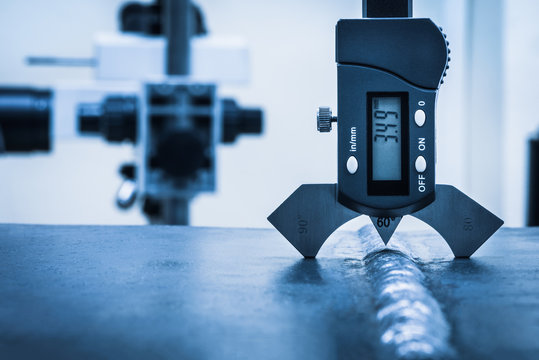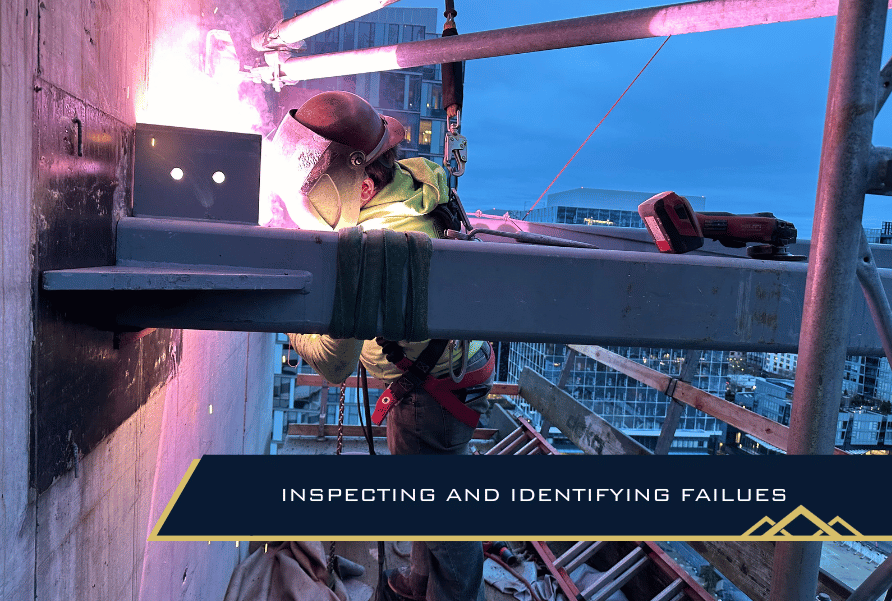Important Tips for Effective Welding Inspection Madison Services
Important Tips for Effective Welding Inspection Madison Services
Blog Article
Exploring Advanced Tools and Methods for Accurate Welding Inspection
In the realm of welding evaluation, the quest of precision and integrity is vital, spurring the advancement of advanced devices and methods. Laser scanning developments and computerized inspection systems, geared up with synthetic intelligence, are redefining the landscape by decreasing human error and enhancing safety and security measures.
Ultrasonic Checking Technologies
Ultrasonic testing innovations regularly represent the leading edge of innovations in welding inspection modern technologies. These technologies have significantly improved the ability to identify and review stoppages within welded structures, guaranteeing boosted honesty and security - Welding Inspection Madison. Ultrasonic testing employs high-frequency acoustic waves to penetrate materials, offering detailed details concerning inner attributes without triggering damages. The most up to date advancements in this field have actually focused on raising accuracy, speed, and the ability to interpret complex data.

Additionally, advancements in software program formulas for information evaluation have improved the precision of issue discovery and sizing. Automated ultrasonic testing systems currently supply high-resolution imaging, making it possible for comprehensive evaluations of weld top quality. These systems are typically incorporated with advanced visualization tools, which facilitate the interpretation of results.
Radiographic Evaluation Methods
While ultrasonic screening innovations have established a high criterion in non-destructive assessment, radiographic evaluation methods remain to play an integral duty in welding evaluation by providing distinct understandings right into material stability. Radiographic testing (RT) utilizes using X-rays or gamma rays to permeate products, creating a radiograph that visually represents the interior framework of a weld. This imaging capability is indispensable for finding subsurface defects such as porosity, incorporations, and fractures that may not show up with surface examinations.
The process involves positioning a radiation source on one side of the weld and a detector on the opposite side. Variations in material thickness and density influence the depletion of the rays, generating a different photo that exactly marks flaws. RT is especially beneficial for evaluating intricate geometries and thick sections where various other methods may fail.
Regardless of its effectiveness, radiographic examination has to be conducted with strict adherence to safety methods as a result of the harmful nature of ionizing radiation. The interpretation of radiographs requires experienced employees, as the high quality of the analysis directly impacts the reliability of the examination. Consequently, recurring developments in digital radiography are enhancing photo clearness and interpretation effectiveness, reinforcing RT's crucial duty in making sure weld quality.
Laser Scanning Advancements
Accepting laser scanning innovation in welding assessment has reinvented the analysis of weld high quality and honesty. Unlike typical examination techniques, laser scanning provides rapid data acquisition, considerably enhancing the effectiveness and precision of weld analyses.
Laser scanning developments have actually caused considerable enhancements in identifying and identifying surface defects such as porosity, lack of blend, and damages. The high-resolution data enables assessors to execute thorough analyses, guaranteeing that welds meet rigorous market standards. Furthermore, this approach supports the development of electronic records, facilitating lasting quality control and traceability.
Furthermore, laser scanning technology incorporates seamlessly with software program services made for automated flaw detection and evaluation. The resultant data can be quickly shared and reviewed, advertising collaborative decision-making processes. As industries remain to demand higher requirements for weld quality, laser scanning stays at the forefront, using unequaled precision and effectiveness in welding examination.
Automated Inspection Solutions

Automated examination systems offer the benefit of consistency, getting rid of human mistake and subjectivity from the assessment process. They are created to run in different environments, from my blog production floorings to remote field websites, making sure detailed coverage. Welding Inspection Madison. These systems can be set to adhere to specific welding requirements and criteria, giving comprehensive reports and paperwork for quality control functions
Furthermore, the assimilation of cloud-based platforms promotes the storage space and analysis of large quantities of inspection data. This enables fad evaluation and predictive maintenance, allowing producers to attend to prospective issues prior to they rise. The adoption of computerized inspection systems is a pivotal move in the direction of enhancing the integrity and efficiency of welding processes in industrial applications.

Enhancing Safety and Performance
A significant facet of boosting safety and efficiency in welding evaluation depends on the assimilation of innovative modern technologies that streamline operations and alleviate dangers. The Recommended Reading fostering of advanced non-destructive screening (NDT) approaches, such as ultrasonic testing, phased array ultrasonic screening (PAUT), and radiographic screening, plays an essential role in ensuring structural integrity without compromising the security of the personnel involved. These techniques enable for thorough assessments with minimal downtime, decreasing prospective risks related to typical methods.
Moreover, the application of real-time data analytics and machine understanding formulas has actually transformed the means assessment data is translated. By employing anticipating analytics, possible defects can be recognized prior to they materialize into important failings, ensuring timely treatments and upkeep. This aggressive technique dramatically enhances operational effectiveness and safety in welding processes.
Furthermore, remote assessment modern technologies, including drones and robotic crawlers outfitted with high-resolution cams, allow assessors to assess hard-to-reach locations without subjecting them to hazardous conditions. This not only improves examination accuracy however additionally reduces human threat. By leveraging these advanced devices and approaches, industries can accomplish greater safety and security requirements and operational performance, inevitably leading to even more dependable and lasting welding inspection practices.
Final Thought
The assimilation of advanced devices and techniques in welding examination dramatically enhances issue discovery and makes certain structural honesty. These developments not only raise assessment performance however likewise contribute to improved safety and high quality assurance in commercial welding applications.

Ultrasonic testing developments frequently represent the forefront of improvements in welding evaluation innovations.While ultrasonic screening technologies have actually set a high standard in non-destructive evaluation, radiographic examination techniques have a peek here continue to play an integral duty in welding inspection by supplying one-of-a-kind understandings into material integrity.Embracing laser scanning modern technology in welding evaluation has actually reinvented the analysis of weld quality and honesty. As markets proceed to demand higher criteria for weld top quality, laser scanning remains at the center, using unmatched precision and performance in welding examination.
Automated evaluation systems offer the advantage of uniformity, getting rid of human error and subjectivity from the inspection procedure.
Report this page